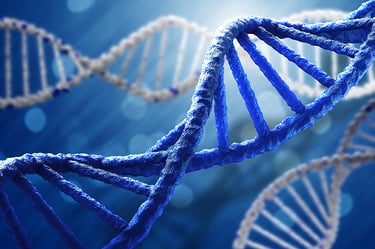The genetic diversity of rodents used in drug development studies plays a role in both replicating research and understanding the differences in a treatment due to heterogeneity of a model. To help researchers understand their choices, Sheri Church, PhD, Global Geneticist at Inotiv, provided a primer on inbred and outbred rodent strains.

Understanding the ranges of genetic variability
Isogenic or inbred models are nearly identical to every animal in their population. With minimal genetic variations, these models are bred to carry the same mutations, which are passed on from generation to generation.
“Inbred rodent models can support nearly all areas of biomedical research and typically are created to present health conditions like an immunocompromised status, diabetes, or obesity,” explained Dr. Church. “For example, immunocompromised models can help determine if a treatment is helping fight an infection, rather than the immune system itself. Each inbred animal should be affected by the treatment in the same way, whereas if you were using an outbred population, each individual animal might react differently.”
Outbred models serve many general-purpose studies and are commonly used in studies of aging, nutrition, oncology, infectious diseases, toxicology, diet/obesity, metabolism, neurology, reproduction, and teratology, among others.
“Outbred models are generally more reflective of human genetic diversity to determine if there is variation of treatment across a population,” added Dr. Church. “Some studies might start with an inbred model for initial discovery research and then move into an outbred model to determine how a model with greater genetic diversity will react.”
Differences in mating schemes
As the name suggests, an inbred population is generated through mating with an immediate relation (brother or sister). Their offspring are considered 99% homozygous. However, sometimes new mutations will appear in the line.
“Mutations are the biggest item of concern in these inbred lines as the animals are breeding back into the same line. If new mutations appear, they can take over the population,” explained Dr. Church. “Once we have inbred to that point, we need to refresh the model to reflect its original genetic line.”
Through quarterly genetic testing and refreshing the lines every five years with cryopreserved stock, an inbred colony line can start anew, removing any deleterious alleles that may have appeared over time.
In the outbred models mating scheme, approximately 75 animals are crossed in a different mating scheme, rotating among unrelated models to ensure different genetic profiles are generated within the same strain.
Advancing human health
By understanding the genetics of the different strains, Dr. Church works to help researchers choose the best model for their studies.
“I like knowing that my work supports potentially life-changing discoveries,” she said. “Genetics is so important to study interpretation and experimental reproducibility, ultimately supporting the overall success of any research project.”


